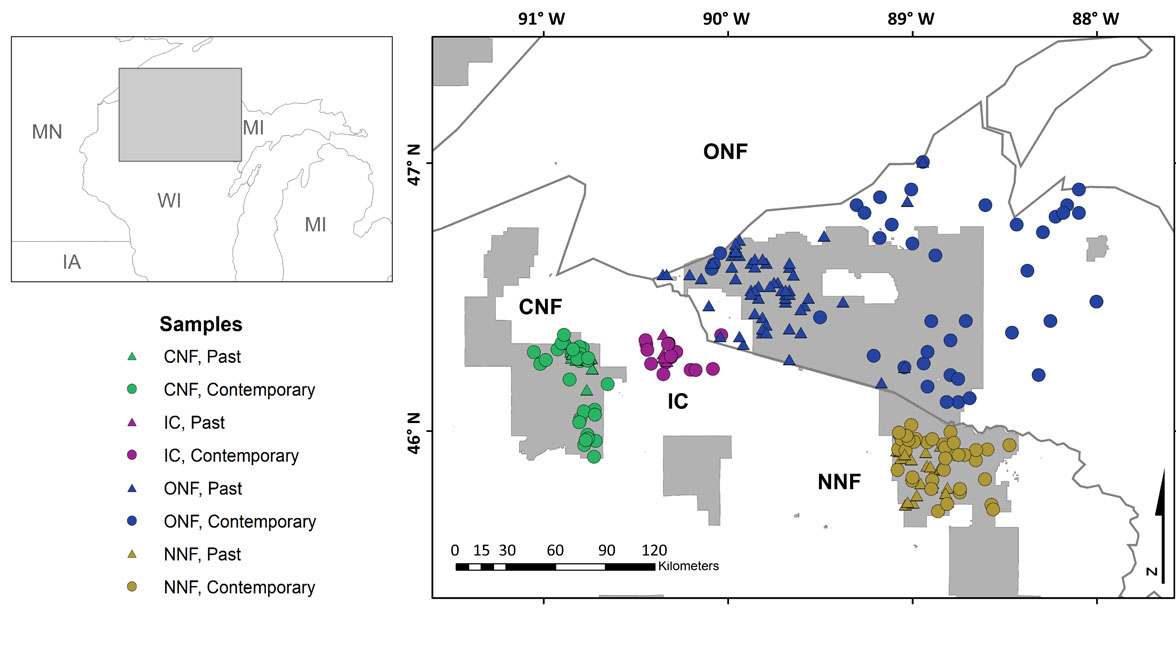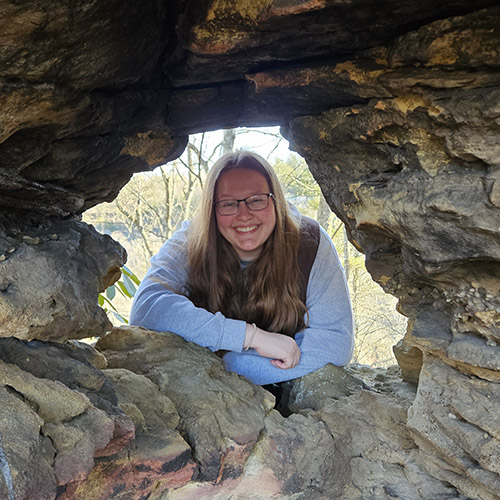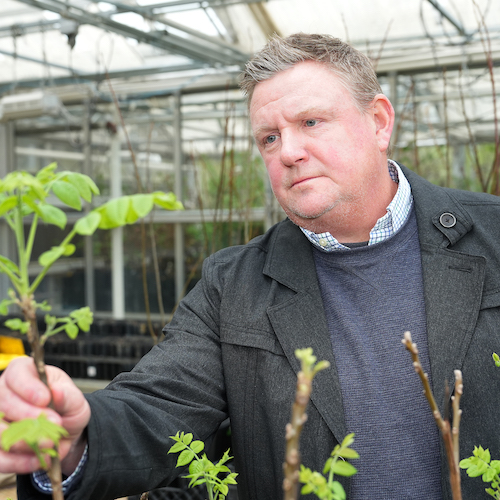American martens (Martes americana) have been reintroduced repeatedly in the Upper Midwest in an effort to establish self-sustaining populations, but how successful have those efforts been and how can past results be utilized to inform future reintroductions?
Casey Day, a research scientist at the University of Montana who completed his PhD under professor of wildlife science Pat Zollner in 2018, published findings from his research on the species in an article titled “Evaluating the legacy of multiple introductions of American Martens on spatiotemporal patterns of genetic diversity” in the Journal of Mammalogy. Research from this publication is from the third chapter of Day’s PhD dissertation.
The primary goal for the research was to contribute to the understanding of the conservation status of American martens in Wisconsin. Martens were previously extirpated from Wisconsin and a series of reintroductions have been undertaken with the goal of restoring marten populations throughout the Upper Midwest.
 “Martens in Wisconsin remain state-endangered, and this research helped to determine how marten populations in the Upper Peninsula of Michigan and northern Wisconsin are connected to one another, their genetic status, and factors that may contribute to their slow recovery,” Day explained. “We were particularly interested in the phenomenon of assortative mating, which occurs when individuals are less likely to mate with one another due to genetic or behavioral differences, as may be the case for reintroduced martens coming from different source populations. Secondly, the work provides insight into reintroduction strategies in general and how to best plan/design reintroductions to maximize likelihood of success by promoting connectivity among reintroduced populations.”
“Martens in Wisconsin remain state-endangered, and this research helped to determine how marten populations in the Upper Peninsula of Michigan and northern Wisconsin are connected to one another, their genetic status, and factors that may contribute to their slow recovery,” Day explained. “We were particularly interested in the phenomenon of assortative mating, which occurs when individuals are less likely to mate with one another due to genetic or behavioral differences, as may be the case for reintroduced martens coming from different source populations. Secondly, the work provides insight into reintroduction strategies in general and how to best plan/design reintroductions to maximize likelihood of success by promoting connectivity among reintroduced populations.”
The findings from this research can be used to assist any agency that manages wildlife and other resources in the upper Midwest, such as the Great Lakes Indian Fish and Wildlife Commission, the Wisconsin Department of Natural Resources, the U.S. Forest Service and county foresters. They also may be useful to private entities that have a stake in local resources for timber harvest or mining, for example.
The status of martens in Wisconsin will affect how these agencies and private entities use available resources while also providing protections for marten habitat. If future reintroductions occur, this research will help to inform how best to conduct the reintroductions to maximize likelihood of success from a genetic perspective.
Indigenous tribes local to the region (Anishinaabeg tribes) also have a strong connection to martens, and therefore marten conservation is important from a social/cultural perspective as well. Waabezheshi (as martens are called in Ojibwe) are a clan animal and thus of special importance.
Due to the extensive past reintroduction efforts in Wisconsin, data on the American marten population in the region provides an ideal opportunity to look at the interactions between landscape connectivity (regular dispersal) and assortative mating and its effects on reintroduction outcomes. Researchers sampled martens from north central Wisconsin through the western portion of the Upper Peninsula of Michigan, an area which includes two national forests as well private industrial and non-industrial forestlands. The area includes northern hardwoods (sugar maple, basswood, yellow birch), conifer stands and small conifer pockets embedded in hardwood stands, as well as old aspen stands, which are preferred habitat for martens.
Methods and Findings
 In order to assess the status and success of marten reintroduction in Wisconsin, Day and his fellow researchers used genetic data collected during two time periods separated by 10 years, or five generations of martens.
In order to assess the status and success of marten reintroduction in Wisconsin, Day and his fellow researchers used genetic data collected during two time periods separated by 10 years, or five generations of martens.
Genetic samples were collected from 2000 to 2005 and again from 2012 to 2016 from the Chequamegon-Nicolet National Forest and the Ottawa National Forest as well as Iron County, Wisconsin. The national forest areas have a history of marten reintroductions beginning in 1975, with the most recent occurring from 2009 to 2011 in the Chequamegon. Iron County, which is primarily made up of county and private forestland, is geographically centered between the other three and may provide important habitat connecting the previously reintroduced populations.
 This figure shows a map of the study area and the locations where the marten samples were collected.
This figure shows a map of the study area and the locations where the marten samples were collected. After DNA extraction and genotyping, samples were analyzed to look at genetic diversity. The publication states its findings as follows:
While some results (e.g., heterozygosity, allelic richness) are not yet alarming, the trajectories indicate overall declines in genetic diversity and increases in fine-scale genetic structure, which may lead to vulnerable populations. Without continued monitoring, managers will be unable to make informed decisions about the future of martens in the region. Reintroduction projects should plan to balance genetic diversity with the potentially harmful effects of assortative mating, promoting genetic connectivity in addition to structural connectivity. Doing so will improve the likelihood that reintroduced populations of animals will maintain the genetic health to avoid becoming demographically vulnerable.
How do these findings apply to the broader use of genetics in understanding reintroduction efforts and how animals move through various sites?
“When animals move through landscapes, their genes move with them, and this process can promote genetic diversity and therefore promote healthy wildlife populations,” Day said. “Studying genetics can also tell us a lot about how animals move through landscapes. In this research, we used genetics to learn how well individuals are able to move between populations of martens, and once they get there, if they are able to mate with individuals from other populations. The research provides insights for managers of wildlife to plan for the future conservation of martens, but also contributes to the field of reintroduction biology overall in that a successful reintroduction requires not only movement between populations, but the ability to mate as well, thus contributing to genetically healthy wildlife populations.”
Dr. Jonathan Gilbert, biological services director for the Great Lakes Indian Fish and Wildlife Commission, has worked with martens in the Upper Midwest for many years and is encouraged by the additional information this research on the species brings.
“Dr. Day’s work has helped to set the stage for further ecological research into factors affecting the viability of martens in Wisconsin,” Gilbert said. “He has established that dispersal paths across Iron County Forests are difficult for martens to navigate. Yet other researchers from the lab of Jonathan Pauli at UW Madison have found that immigration from source populations in the U.P. is needed to continue the viability of martens in Wisconsin. The Ojibwe Tribes, who are members of the Great Lakes Indian Fish and Wildlife Commission, are using the results from Casey and others to try to recover martens from their endangered status. As these culturally important species struggle with their viability, Ojibwe tribes are hoping that all of the work conducted by Dr. Zollner and Dr. Day will contribute to the marten’s wellbeing.
“This effort of Dr. Day’s, including other researchers from Purdue, has been a huge collaborative effort with many agencies involved. Wisconsin DNR, USFS, Great Lakes Indian Fish and Wildlife Commission, Purdue University, and UW Madison are all contributing to this effort. It is a great example of how multiple people from multiple perspectives can all contribute to our state of knowledge.”





